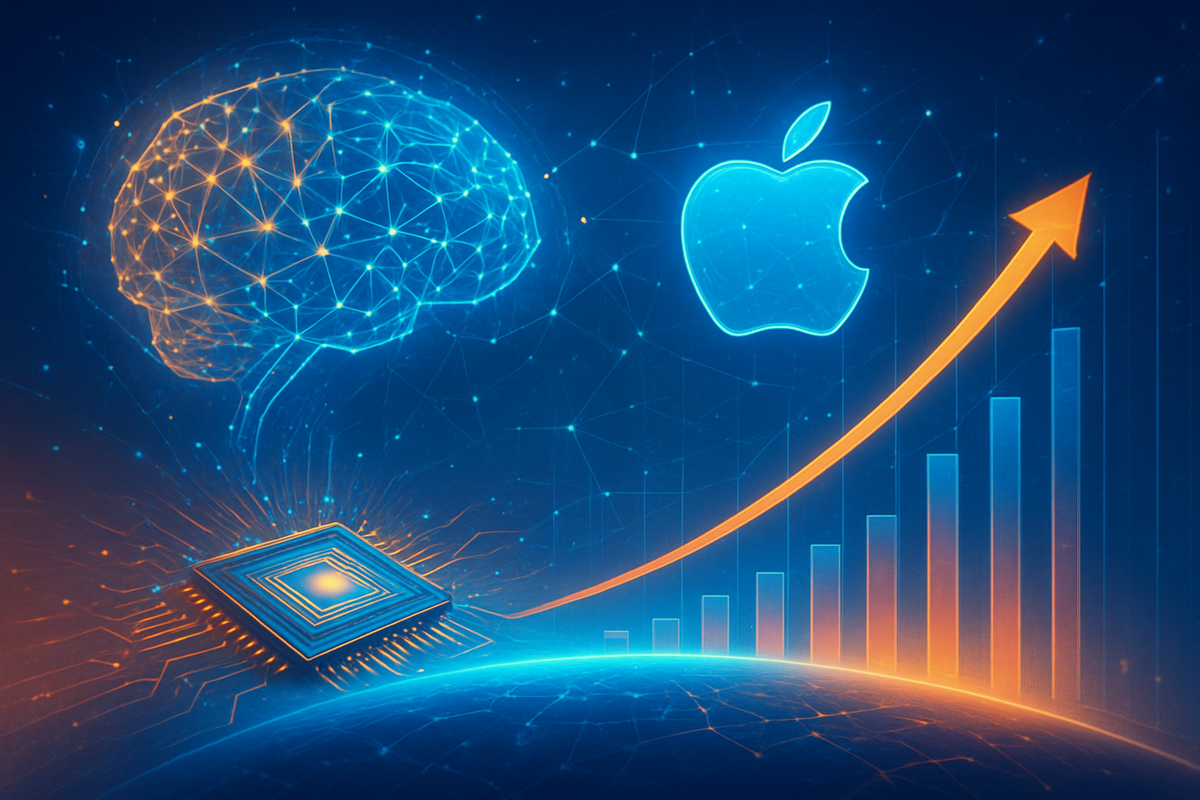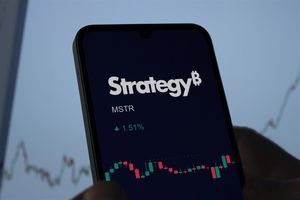
New York, NY – November 11, 2025 – The S&P 500 Technology sector is experiencing a period of remarkable growth, with today's trading reinforcing its position as the undisputed leader of the broader market. Fueled by relentless innovation in Artificial Intelligence (AI), robust corporate earnings, and a favorable macroeconomic outlook, the sector has delivered impressive year-to-date returns, driving the overall S&P 500 to new heights. This powerful rally underscores a significant shift in investor capital towards companies at the forefront of technological advancement, signaling a new era of market dynamics where AI is not just a buzzword, but a foundational driver of value.
The sustained outperformance of tech giants is creating a palpable sense of optimism across financial markets, yet it also brings into focus discussions around market concentration and the sustainability of current valuations. As capital continues to flow into this high-growth segment, the immediate implications include a significant uplift for the entire S&P 500 index, but also a heightened awareness of the risks associated with a market increasingly reliant on a select few mega-cap technology firms.
The AI Gold Rush: A Detailed Look at the Tech Sector's Ascent
The S&P 500 Technology sector's journey to its current strong performance on November 11, 2025, has been a dynamic one, largely shaped by the accelerating influence of Artificial Intelligence. After experiencing a year-to-date decline of nearly 10% in March 2025, the sector staged a dramatic turnaround, with the S&P 500 Information Technology (Sector) Net Total Return Index now boasting a formidable 29.30% year-to-date return as of November 7, 2025. This rebound was catalyzed by a confluence of factors, including the pervasive anticipation of AI momentum from late 2024, significant investments in AI infrastructure, and a macroeconomic environment hinting at potential interest rate cuts.
Throughout mid-2025, advancements in generative AI and the emergence of agentic AI systems rapidly gained traction, driving unprecedented demand for cloud computing services and advanced semiconductor chips. Companies like Microsoft (NASDAQ: MSFT) reported a substantial jump in cloud revenue, largely attributed to AI workloads on its Azure OpenAI Service. By July, NVIDIA (NASDAQ: NVDA) and Microsoft (NASDAQ: MSFT) had both surpassed the $4 trillion market capitalization milestone, solidifying AI as a core investment theme. This period also saw renewed clarity on trade deals and expectations of Federal Reserve interest rate cuts, further bolstering investor confidence and propelling the S&P 500 and Nasdaq Composite into extended winning streaks that continued into November.
Key players driving this rally extend beyond the traditional "Magnificent Seven" mega-cap stocks – Apple (NASDAQ: AAPL), Microsoft (NASDAQ: MSFT), Amazon (NASDAQ: AMZN), NVIDIA (NASDAQ: NVDA), Alphabet (NASDAQ: GOOGL), Meta Platforms (NASDAQ: META), and Tesla (NASDAQ: TSLA). The semiconductor industry, with companies like Arm Holdings (NASDAQ: ARM) and TSMC, has been a critical enabler, providing the foundational hardware for AI. Cloud service providers such as Amazon Web Services (AWS), Microsoft Azure, and Google Cloud Platform (GCP) have also seen immense growth. Initial market reactions have been overwhelmingly optimistic, with strong capital inflows into the tech sector, yet concerns about stretched valuations and potential market consolidation have also surfaced, leading to a strategic pivot towards "efficient growth" and heightened scrutiny on profitability.
Winners and Watchers: NVIDIA and Apple Navigate the AI Boom
The strong positive performance of the technology sector in 2025 has created clear winners and presented unique challenges for its leading constituents, particularly NVIDIA (NASDAQ: NVDA) and Apple (NASDAQ: AAPL). NVIDIA stands as a prime beneficiary, largely due to its foundational role in the AI ecosystem. Its Graphics Processing Units (GPUs) are indispensable for AI development and data center infrastructure, often referred to as the "new gold and oil" of the AI era. This direct correlation means that an AI-driven tech rally translates immediately into surging demand for NVIDIA's products, with analysts forecasting robust revenue growth and the company expected to continue achieving significant market capitalization milestones, potentially reaching $5 trillion. However, NVIDIA faces the challenge of managing sky-high investor expectations and increasing competition from emerging players, alongside potential supply chain risks.
Apple's (NASDAQ: AAPL) journey through this tech rally is more nuanced, drawing strength from its vast ecosystem, strategic AI integration, and anticipated product cycles. Its robust Services segment remains a critical and growing revenue driver, providing stability amidst hardware sales fluctuations. The company is also poised for a device upgrade "supercycle" driven by anticipated strong demand for new iPhone lines and an improved Vision Pro 2. Crucially, Apple's privacy-centric, on-device AI initiative, dubbed "Apple Intelligence," is expected to enhance user experience and drive upgrades across its massive installed base. Despite these advantages, Apple has faced scrutiny for potentially lagging in aggressive generative AI innovation compared to competitors, which could lead to it being a relative underperformer in a heavily AI-driven market if it fails to demonstrate compelling capabilities. Additionally, ongoing market saturation and geopolitical tensions in China pose continued challenges to its growth in a crucial market.
Both companies must navigate potential pitfalls. NVIDIA's rapid ascent has led to valuation concerns, making it vulnerable to pullbacks if earnings don't meet aggressive forecasts. Apple, as a mature and highly valued company, must consistently innovate and deliver exceptional growth to justify its premium. The market in 2025 is proving to be selective, rewarding companies that can demonstrate tangible AI integration, robust financial performance, and adaptability in a rapidly evolving technological landscape.
Wider Implications: Reshaping Industries and Regulatory Landscapes
The sustained rally in the S&P 500 Technology sector in 2025 carries profound wider significance, signaling a fundamental reshaping of industries and intensifying scrutiny from regulators. This robust performance is largely underpinned by the accelerating influence of AI, which is driving significant capital expenditure in infrastructure like data centers and fueling deeper integration of AI across sectors from investment management to healthcare. Beyond AI, trends such as spatial computing, advanced connectivity, and enhanced cybersecurity are also taking center stage, indicating that the market views these technological advancements as drivers of tangible earnings growth rather than mere speculation.
The ripple effects are extensive. For tech competitors and partners, the growth extends to cloud computing providers, digital advertising platforms, and data center infrastructure companies, fostering an expanding AI ecosystem. However, it also intensifies competition for talent and could widen the gap between tech giants and smaller firms due to the high cost of comprehensive AI implementation. For non-tech industries, the rally reinforces the imperative for digital transformation, leading to productivity gains through automation and creating new job opportunities in the digital economy. Industries like healthcare, finance, and manufacturing are already experiencing profound impacts from AI, driving increased IT spending across the board.
From a regulatory standpoint, a tech rally driven by a few dominant players inevitably intensifies scrutiny. Governments worldwide are increasing investigations into antitrust concerns, data protection, and privacy, with new legislations like the EU's Digital Markets Act (DMA) and Digital Services Act (DSA) setting precedents. The rapid development of AI has also prompted calls for AI governance and ethical standards, addressing concerns over data usage, deepfakes, and the ethical implications of AI research. While fostering innovation remains a goal, the push for AI governance platforms will likely grow. Historically, this period draws comparisons to the dot-com bubble of the late 1990s, but with crucial differences: the current rally is largely underpinned by tangible earnings growth and real demand from financially robust mega-cap IT companies, rather than speculative hype. Lessons from that era, emphasizing sustainable growth and profitability, remain highly relevant.
The Road Ahead: Opportunities, Challenges, and Strategic Pivots
Looking beyond the current strong performance, the S&P 500 Technology sector is poised for a dynamic period in late 2025 and into 2026. In the short term, the "AI buildout" is expected to continue driving substantial demand for advanced chips, software, and cloud infrastructure. While some analysts anticipate market pullbacks of 5% or more due to stretched valuations, the long-term outlook remains robust, with AI projected to contribute significantly to the global economy by 2030. The focus is expected to shift from solely AI infrastructure to a broader "Phase 3" of application rollout and monetization, creating new revenue streams for software and services firms.
To sustain momentum, tech companies will need to make strategic pivots. Prioritizing profitability and sustainable growth over speculative "hyper-growth" will be paramount, potentially leading to increased outsourcing and a focus on efficiency. Deep integration of AI into core operations and product offerings is essential, along with enhanced risk management frameworks to address escalating cybersecurity threats and geopolitical tensions. Ethical AI development and governance will also be crucial for navigating complex regulatory landscapes. Opportunities abound in continued AI dominance, growth in software and application layers, and surging demand for cybersecurity solutions. Emerging technologies like digital twins, autonomous robotics, and climate tech are also identified as significant growth engines.
However, challenges persist. High valuations and market concentration pose systemic risks, with investor anxiety rising over firms betting big on AI. Macroeconomic headwinds, including a short-term global economic slowdown and elevated interest rates, could impact business investment. Concerns about high capital spending by AI firms potentially lowering free cash flow and future earnings expectations are also prevalent. Regulatory scrutiny, geopolitical tensions, and the escalating energy consumption of data centers further complicate the landscape. Potential scenarios range from resilient growth and diversification, where AI and cybersecurity remain primary drivers, to a more bullish "bubble scenario" where the S&P 500 could surge further, or a bearish outcome if stagflation or significant corrections materialize. The sector's future leadership will depend on its ability to adapt, innovate responsibly, and demonstrate sustainable growth will ultimately define the trajectory of this new era of tech dominance.
A New Era of Tech Dominance: Navigating the Future Market
The S&P 500 Technology sector's exceptional performance in 2025 has unequivocally cemented AI's role as the central force behind the IT sector's stellar returns, signaling a new era for financial markets. The key takeaway is the transformative power of AI, not merely as a standalone technology, but as a foundational amplifier of other technological advancements, reshaping how businesses operate and driving unprecedented demand for infrastructure and software. This period has highlighted the critical importance of cloud computing, cybersecurity, and continuous digital transformation as pillars of modern economic growth.
Moving forward, the market is expected to remain tech-led, with UBS forecasting the S&P 500 to reach 7,500 by 2026, largely powered by the technology sector. However, investors should anticipate an evolving landscape. While mega-cap tech companies have driven disproportionate gains, the rally is expected to broaden beyond these large-cap stocks in the coming quarters, potentially benefiting other sectors and smaller-cap companies. The shift from the "picks and shovels" phase of AI (hardware and infrastructure) to the software and application layers will open new avenues for growth and investment.
The lasting impact of this tech boom will be a more technologically integrated global economy, where AI-driven innovation is paramount. However, this also necessitates increased focus on risk management, data security, and sustainable practices, particularly concerning the escalating energy demands of data centers. Investors should closely watch macroeconomic indicators, Federal Reserve actions on interest rates, and corporate earnings reports, scrutinizing how tech companies translate AI investments into tangible profits. Monitoring market breadth, regulatory developments in AI governance and data privacy, and geopolitical tensions will be crucial for navigating the opportunities and challenges that lie ahead. The ability of tech leaders to adapt, innovate responsibly, and demonstrate sustainable growth will ultimately define the trajectory of this new era of tech dominance.
This content is intended for informational purposes only and is not financial advice





